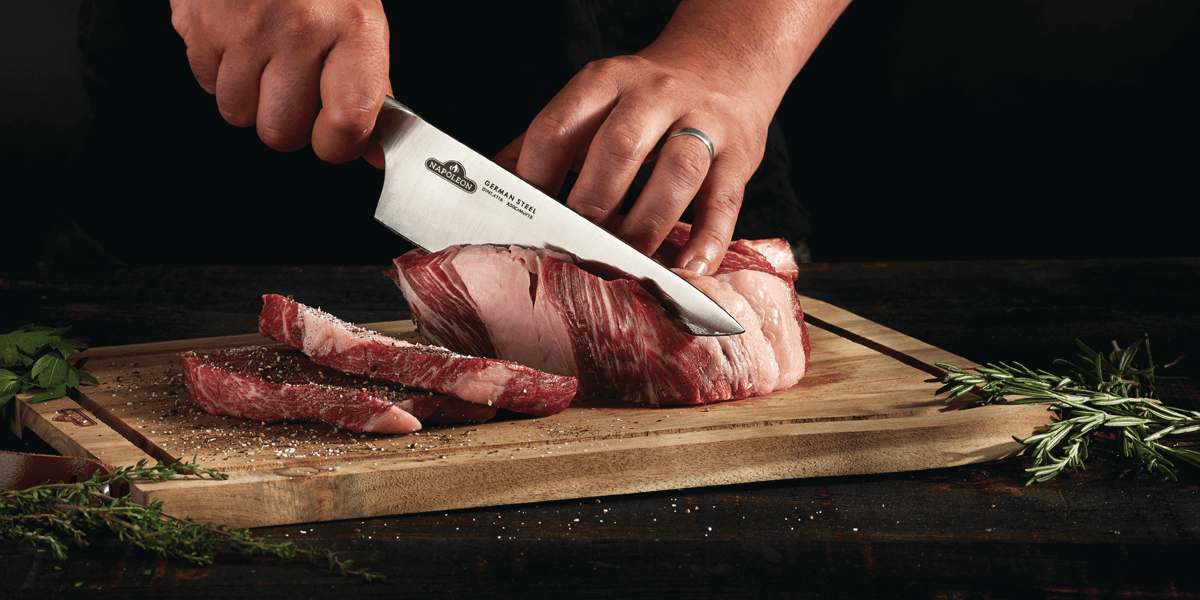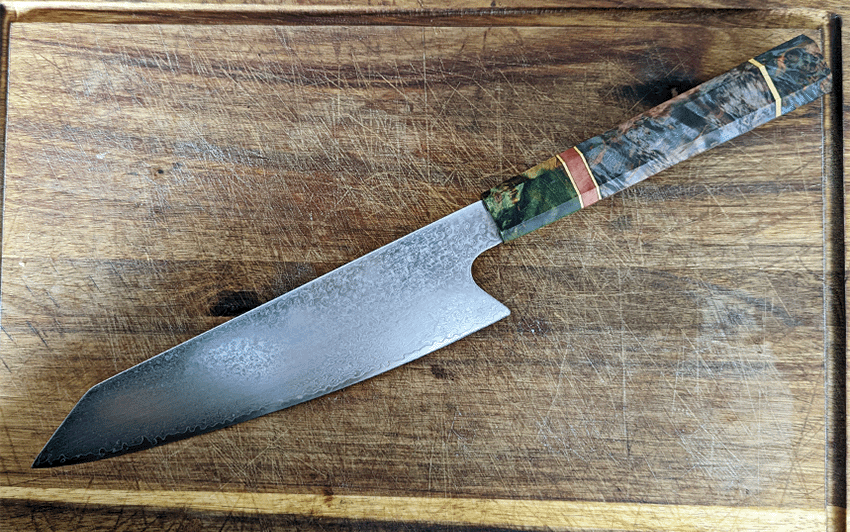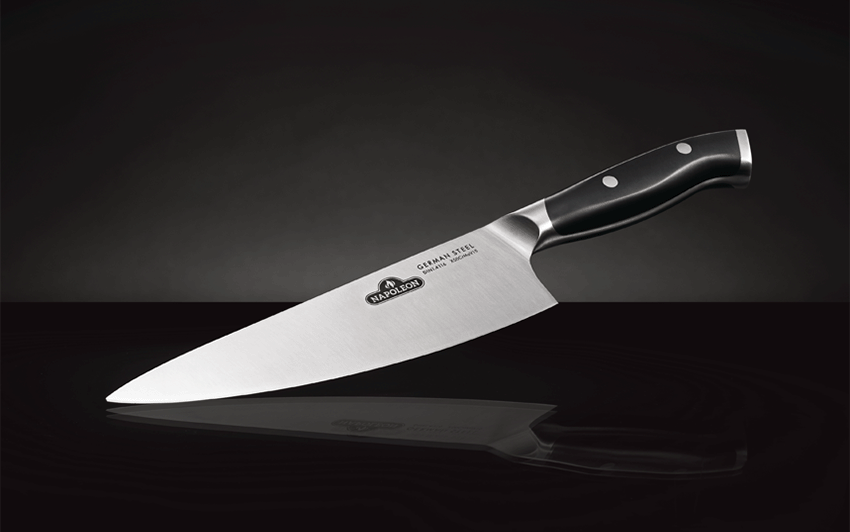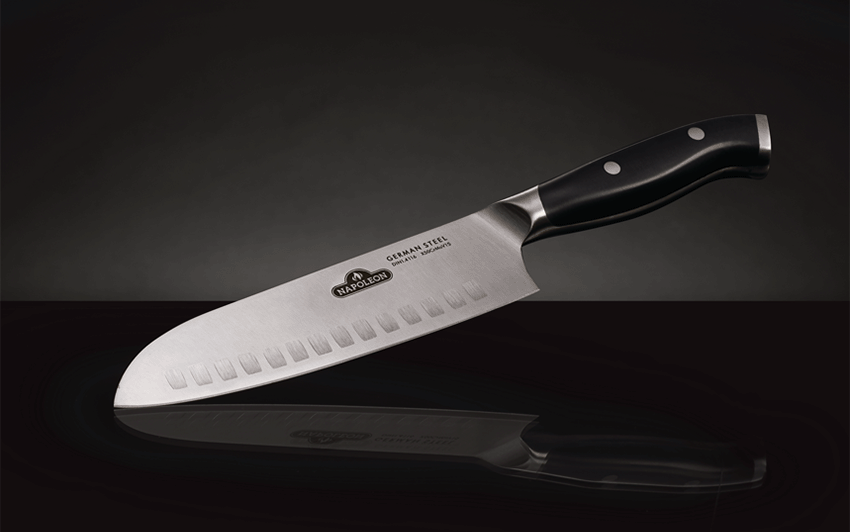
Know Your Knives - How to Choose the Best Kitchen Knife
Selecting knives for your kitchen is a big decision. It can change the way you view the task of cooking entirely. If you are just starting out in life or looking to upgrade your current equipment, you will still need to know how to choose the best knife or knives for cooking. Use this guide to kitchen knives to help you select the best knives for your collection.
Why you Need the Right Knife
While a great, general-purpose knife is good for most things, it is still ideal to have the proper knife for the job for several reasons. Besides making chopping and slicing easier, specialized knives ensure safety when doing certain knife-based tasks as well.
Things to Consider When Choosing a Knife
Selecting knives for any job is a matter of preference for sure, but knowledge of materials, construction, and how they should feel will increase the likelihood of you selecting the knife or knives that work best for you.
Materials Used in Both the Knife and Handle
The materials used in the knife you choose makes a huge difference when it comes to many things, including how long a knife will retain its edge, the weight, and even its durability when it comes to the environment it’s kept in. Knives and their handles can be made from:
Stainless Steel
Stainless is the most popular, most often-seen material for knives in the mass-produced market. They’re generally the least expensive option when it comes to purchasing. Stainless steel knives resist rusting, so they are more forgiving when it comes to dirt and water. Stainless steel has a great edge but is a softer material that can require frequent sharpening.
Napoleon’s knives are made from high-grade German Stainless Steel with a hardness scale (HRC Rating) of 56. As the resident chef as well as blog writer at Napoleon, I have been enjoying the use of Napoleon’s knives for the past few years. They retain their sharpness very well and require minimal sharpening to retain the edge. Weight and balance are beautiful in my smaller hands, and my husband’s larger hands are equally comfortable.
Napoleon’s Stainless Steel Chef’s Knife
Carbon Steel
Carbon steel is the pricier material when it comes to knife purchases. This is because a carbon steel knife will stay sharp longer than a stainless knife will. Carbon steel knives do not like to be left dirty or drip dry. They should be washed right away after use and dried immediately to prevent rust.
Damascus
If you are looking for the most beautiful blend of the best of both worlds a Damascus blade is for you. Very pricy, a Damascus knife is a combination of stainless and carbon steel with a carbon steel core. This means you get all the benefits of the hardness of carbon steel with the forgiving nature of stainless. The layers of steel are folded on themselves in the forging process rendering a harder blade with a beautiful, mottled pattern that resembles ripples of water.
Ceramic
Ceramic blades are harder and lighter than carbon steel with a longer-lasting edge. However, they are prone to chipping. They are less expensive than steel knives, and they are great at slicing. But, due to the fragility of the blade, they don’t make a great all-purpose knife in the end. Cost-wise, they can be very inexpensive, but you will get what you pay for when going this route, or they can be very expensive.
Handle
A knife’s handle can be just as important as the blade material itself. Handles can be made of many materials ranging from synthetic to natural. For the ideal grip, wood and metal handles can be best, although wood handles will need upkeep much like a cutting board. Synthetic handles can be fantastic, while others not so much. Bakelite and plastic handles are lightweight and require no maintenance. However, you will want to be aware of the material as it can sometimes be slippery, or they have finger grooves which can be a detriment to those with larger or smaller hands.
Another thing to consider when selecting your knife and looking at the handle is to make sure that there is enough clearance between your hand and the countertop and cutting board. This ensures that you don’t accidentally bang your fingers while cutting or accidentally cut yourself.
Sharpness & Edge Retention
Directly impacted by materials used, the sharpness and the length of time a knife will hold its edge should be part of your consideration when buying knives. The harder the material used, the longer the edge will last. You can request the HRC or hardness rating of a knife when you are shopping around. Anything over 56 is considered great, anything between 59 and 66 is excellent, and this can be reflected in the price of a knife.
Hardness rating known as the HRC Scale or the Rockwell Hardness Scale tests how much force it takes for the tip of a diamond to make a dent in the metal. The less force and less damage made provides a higher rating and indicates the hardness of the material.
Weight & Balance
No matter what, a knife should feel comfortable in your hand. When discussing balance, we’re referring to the stability of the knife in your hand. A knife that has too much weight towards the tip or the butt is unbalanced and will make using it uncomfortable. The weight of a knife is all about personal preference. Some prefer a knife that feels weighty in the hand. This can give you a sense of substance and gravitas, or lead to fatigue when chopping. A lighter knife will feel more flexible and maneuverable but can feel flimsy for big jobs like thick cuts of meat and large vegetables.
Napoleon’s Stainless Steel Santoku Knife
Forged vs Stamped
Knives can be forged or stamped, and this makes a big difference in their construction. Forged knives are shaped all the way down to their molecules through the process of forging – think blacksmiths. They are made from one continuous piece of steel, all the way from tip to tang. Their edge will last longer and forged knives are generally more expensive, but do feel good in the hand and have great balance. Forged knives have added strength, the metal throughout the body of the whole knife will support the blade as it is used which is great for heavy tasks. Napoleon’s line of kitchen knives are forged.
Stamped knives are stamped out of a single sheet of steel. They’re cut into shape, they’re lighter, cheaper, and faster to make. This kind of knife doesn’t retain its edge as long and will need to be sharpened more often.
To tell the difference between these two types of knife construction, just look at the handle. A stamped knife will rarely have a steel bolster, while a forged will. Forged knives will have steel running from the tip of the blade all the way to the butt, meaning the handle will be, at least partially, made of metal with the handle riveted on both sides. Less expensive stamped knives will have a small slip of metal off the back of the blade that is slotted into the handle. This can be glued in or riveted.
Required Care
Finally, the care required to keep your knives in good working order is a factor to consider when selecting the best knives. Most quality knives need to be cleaned and dried right away after use to maintain the edge and prevent rust. This goes doubly so for carbon steel knives. You will want to also consider the handle material, as wooden handles may need periodic waxing and oiling to ensure that the woodgrain remains smooth. This is a decision that must be made in the same fashion as you choose your cooking grids for your barbecue. How much work are you willing to put into them to keep them clean and sharp?
If You Had to Choose One
If you are looking for one good knife to begin your collection, the best knife to start with would be a high-quality, general-purpose, chef’s knife or santoku knife. Great for chopping, slicing, heavy-duty tasks, and things that need a finer touch a chef’s knife or a santoku will perform and then some.
Napoleon’s Stainless Steel Chef’s Knife is ideal for just about every job, well balanced, and feels great. Good for large and small hands.
Napoleon’s Stainless Steel Santoku Knife is strong and features Granton divots to prevent food from sticking to the blade. Good for smaller hands and most knife jobs.
Now that you know how to choose the best knife, there are two options for you when moving forward on getting new knives. You can tailor the collection, purchasing the knives that are best suited to the tasks that you perform most and building your collection from there. You can also purchase a block with a collection of knives that have already been selected for you. These will come with the most commonly needed blades already. From there, you can add more specialized knives later.
Did you find this guide to kitchen knives helpful? What is your favorite knife to use? Tell us all about your quest to find the perfect blade for your culinary adventures by sharing your stories, recipes, and photos with us on social like our Facebook and Tiktok pages using the hashtags #NapoleonEats and #NapoleonGrills.




